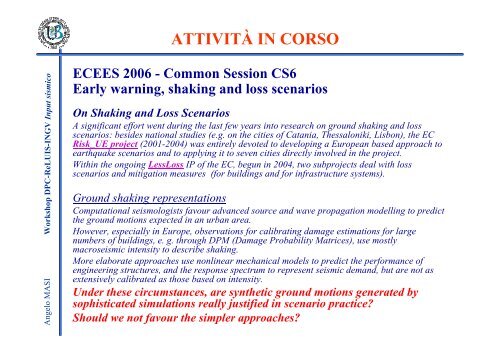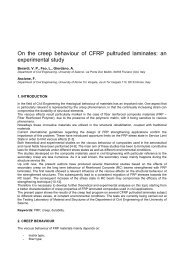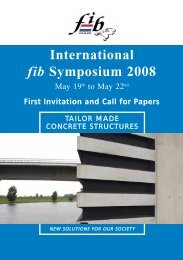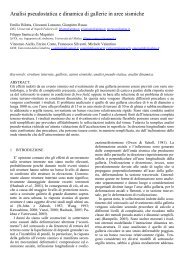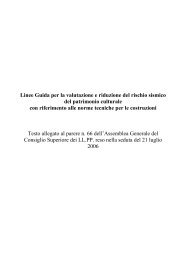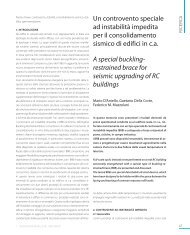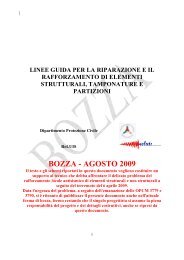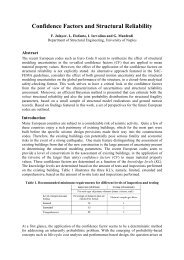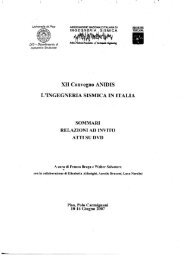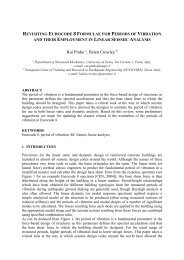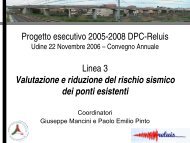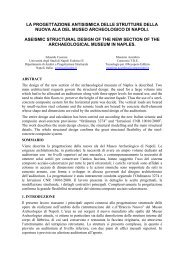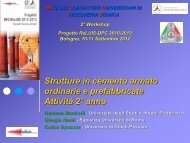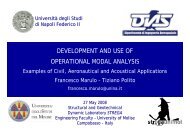TEMA 1: La definizione dell'Input Sismico per valutazioni ... - ReLUIS
TEMA 1: La definizione dell'Input Sismico per valutazioni ... - ReLUIS
TEMA 1: La definizione dell'Input Sismico per valutazioni ... - ReLUIS
Create successful ePaper yourself
Turn your PDF publications into a flip-book with our unique Google optimized e-Paper software.
ATTIVITÀ IN CORSO<br />
Angelo MASI Workshop DPC-<strong>ReLUIS</strong>-INGV Input sismico<br />
ECEES 2006 - Common Session CS6<br />
Early warning, shaking and loss scenarios<br />
On Shaking and Loss Scenarios<br />
A significant effort went during the last few years into research on ground shaking and loss<br />
scenarios: besides national studies (e.g. on the cities of Catania, Thessaloniki, Lisbon), the EC<br />
Risk_UE project (2001-2004) was entirely devoted to developing a European based approach to<br />
earthquake scenarios and to applying it to seven cities directly involved in the project.<br />
Within the ongoing LessLoss IP of the EC, begun in 2004, two subprojects deal with loss<br />
scenarios and mitigation measures (for buildings and for infrastructure systems).<br />
Ground shaking representations<br />
Computational seismologists favour advanced source and wave propagation modelling to predict<br />
the ground motions expected in an urban area.<br />
However, especially in Europe, observations for calibrating damage estimations for large<br />
numbers of buildings, e. g. through DPM (Damage Probability Matrices), use mostly<br />
macroseismic intensity to describe shaking.<br />
More elaborate approaches use nonlinear mechanical models to predict the <strong>per</strong>formance of<br />
engineering structures, and the response spectrum to represent seismic demand, but are not as<br />
extensively calibrated as those based on intensity.<br />
Under these circumstances, are synthetic ground motions generated by<br />
sophisticated simulations really justified in scenario practice?<br />
Should we not favour the simpler approaches?


